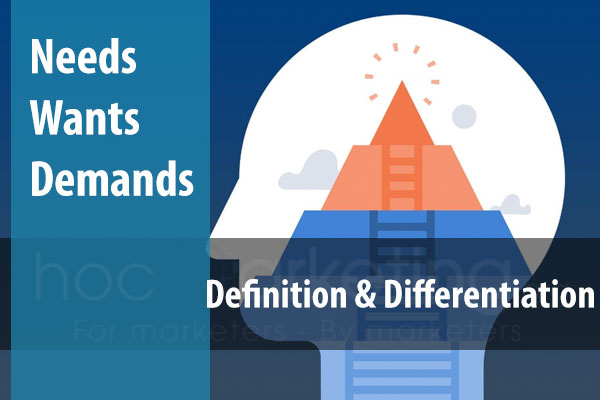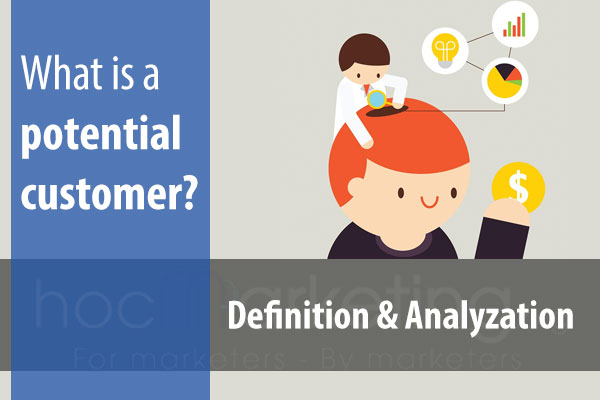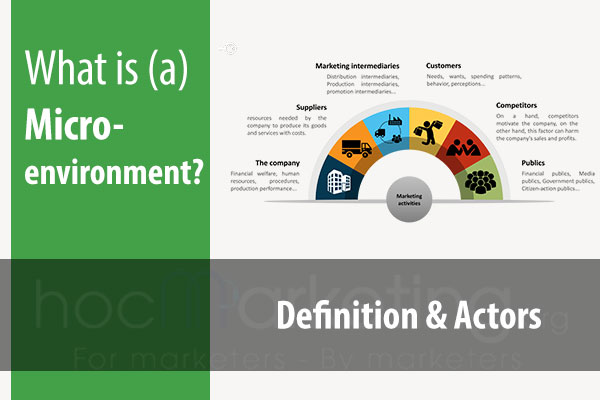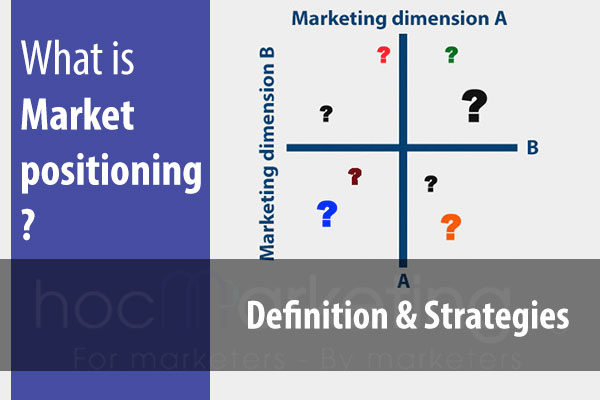
What are Micro-Moments? Applying Micro-Moments in Marketing

Learn how to apply micro-moments in marketing with our guide. Identify, create, optimize, and measure these key moments to improve customer engagement and drive conversions. Discover the importance of micro-moments and how they can impact your overall marketing strategy.
In today's fast-paced digital world, consumers are constantly in search of information and solutions. With the rise of mobile devices, they can access this information anytime, anywhere. This has led to the emergence of micro-moments - those brief instances when consumers turn to their devices to find what they need in the moment.
Micro-moments are crucial for businesses to understand and leverage in their marketing strategies. By providing consumers with the information they need in these moments, businesses can create a more seamless and personalized experience, ultimately leading to increased brand loyalty and revenue.
In this blog post, we will discuss what micro-moments are, why they are important in marketing, and how businesses can effectively apply them in their strategies. We will walk through the four key steps involved in utilizing micro-moments - identifying them in the customer journey, creating content for them, optimizing for them, and measuring their success. By the end of this post, you will have a clear understanding of how to leverage micro-moments to elevate your marketing game.
What is Micro-Moments?
Micro-moments are the small, yet critical, moments that occur throughout a customer's journey with a brand. These moments are characterized by a customer's need for immediate information or action, often driven by a mobile device. Micro-moments can happen at any time, and they are usually brief but intense, making them a crucial opportunity for marketers to capture a customer's attention and offer value. In today's fast-paced world, where consumers expect to find what they need quickly and easily, micro-moments represent a significant shift in the way marketers need to approach their strategies. By understanding and leveraging micro-moments, businesses can create more meaningful interactions with their customers, leading to increased engagement, loyalty, and revenue.
The Importance of Micro-Moments in Marketing
Micro-moments are becoming increasingly important in the world of marketing. The concept of micro-moments refers to those brief moments in time when consumers use their mobile devices to find information or make a purchase decision. These moments can occur at any time, and they are often driven by a need for immediate gratification or a desire to solve a problem quickly.
For marketers, micro-moments represent a significant opportunity to reach consumers in a highly targeted and effective way. By understanding when and why consumers are turning to their mobile devices, marketers can create content and messaging that is tailored to their specific needs and interests. This can help to increase engagement, build brand loyalty, and ultimately drive sales.
The importance of micro-moments in marketing lies in the fact that they represent a shift in consumer behavior. In the past, consumers may have spent hours researching products or services before making a purchase decision. Today, however, consumers are turning to their mobile devices to find information in real-time. This means that marketers must be able to deliver the right message at the right time, in order to capture the attention of consumers in these micro-moments.
In addition to the immediate benefits of capturing consumer attention in micro-moments, there are also longer-term benefits to be gained. By building a strong presence in micro-moments, marketers can establish themselves as a trusted source of information and expertise in their industry. This can lead to increased brand recognition, higher levels of customer loyalty, and ultimately, increased revenue.
Overall, the importance of micro-moments in marketing cannot be understated. By understanding when and why consumers are turning to their mobile devices, marketers can create highly targeted content and messaging that resonates with their audience. This can help to build brand loyalty, increase engagement, and ultimately drive sales in an increasingly competitive marketplace.
Applying Micro-Moments in Marketing
Micro-moments are crucial in today's marketing landscape. By understanding these moments, businesses can create content and optimize their strategies to cater to consumer needs at the right time and place. Applying micro-moments in marketing involves several steps. The first step is identifying the micro-moments that are relevant to the customer journey. This involves understanding what a consumer is looking for when they turn to their mobile device or search engine. Once identified, businesses can create content that caters to these specific moments.
The second step is creating content for micro-moments. This involves understanding the different types of content that are relevant to each moment, such as videos, blog posts, or social media updates. Creating content that is engaging, informative, and easily accessible is crucial to capture the consumer's attention.
The third step is optimizing for micro-moments. This involves ensuring that the content is easily accessible and optimized for mobile devices. Mobile optimization is essential since most consumers use their smartphones to access information. By optimizing for mobile, businesses can ensure that their content is accessible to consumers whenever and wherever they need it.
The final step is measuring the success of micro-moments. This involves tracking metrics such as engagement rates, click-through rates, and conversion rates. By measuring the success of micro-moments, businesses can determine which moments are most effective and adjust their strategy accordingly.
In conclusion, applying micro-moments in marketing involves identifying the relevant moments, creating content, optimizing for mobile, and measuring success. By understanding the importance of micro-moments and implementing these steps, businesses can cater to consumer needs and improve their overall marketing strategy.
Step 1: Identifying Micro-Moments in the Customer Journey
Identifying Micro-Moments in the Customer Journey requires a deep understanding of the customer's behavior, needs, and wants. Micro-Moments are the small but critical interactions that customers have with a brand throughout their journey, from awareness to purchase and beyond. These moments are characterized by their intent, immediacy, and context, and they can happen anytime, anywhere, and on any device. In order to identify Micro-Moments, marketers need to conduct research, collect data, and analyze customer behavior across different touchpoints. This can be done through customer surveys, focus groups, website analytics, social media monitoring, and other techniques that provide insights into the customer's mindset, preferences, and pain points. By identifying these Micro-Moments, marketers can create personalized and relevant content that meets the customer's needs and expectations at the right time and place.
Step 2: Creating Content for Micro-Moments
Once you have identified the micro-moments in the customer journey, the next step is to create content that will effectively engage and inform customers during these moments. This content needs to be relevant, timely, and useful to the customer, providing them with the information they need in that moment. It should be designed to answer their questions, address their concerns, or help them make a decision.
One effective way to create content for micro-moments is to focus on video content. Videos are a highly engaging and informative medium that can quickly convey information to customers during these brief moments. For example, a customer who is searching for a new car might be more likely to watch a short video that showcases the car's features and benefits rather than reading a lengthy article.
Another approach is to create content that is personalized to the customer's specific needs and preferences. This requires collecting and analyzing customer data to determine what type of content will be most effective for each individual. By tailoring the content to the customer's interests and preferences, you can increase the chances of engaging them during micro-moments.
In addition to video content and personalization, other types of content that can be effective during micro-moments include infographics, product demos, and how-to guides. These types of content are easy to consume and can quickly provide customers with the information they need to make a decision or take action.
Overall, creating content for micro-moments requires a deep understanding of the customer journey and a focus on delivering timely and relevant information. By leveraging video content, personalization, and other types of engaging content, you can effectively reach customers during these critical moments and drive conversions and sales.
Step 3: Optimizing for Micro-Moments
To fully capitalize on micro-moments, marketers must optimize their content and strategies to meet the needs of consumers in real-time. This means providing quick and easy access to information, delivering personalized experiences, and ensuring that content is easy to consume on mobile devices. To optimize for micro-moments, marketers should focus on several key areas, including website speed, mobile responsiveness, and local search optimization. By optimizing for these factors, brands can ensure that they are delivering the best possible experiences to consumers during micro-moments. Additionally, brands should focus on delivering personalized content and offers that are relevant to the individual needs of consumers. This can be achieved through data-driven insights and the use of advanced predictive analytics techniques. Ultimately, by optimizing for micro-moments, brands can improve engagement, drive conversions, and build long-lasting relationships with consumers.
Step 4: Measuring the Success of Micro-Moments
The success of micro-moments can be measured in a number of ways, including engagement, conversion rates, and customer satisfaction. One way to track engagement is to monitor the number of clicks, views, and shares of the content created for micro-moments. Conversion rates can be measured by tracking the number of customers who made a purchase or took a desired action after engaging with micro-moments. Customer satisfaction can be measured through surveys and feedback forms to determine if micro-moments are meeting their needs and expectations.
Another way to measure the success of micro-moments is to use analytics tools to track and analyze customer behavior. Google Analytics, for example, can provide insights into how customers interact with a website, including the pages they visit, the time spent on each page, and the actions they take. This information can be used to optimize content and improve the customer experience.
It's important to continually monitor and analyze the success of micro-moments to ensure they are effectively engaging and converting customers. This data can be used to make informed decisions about content creation, optimization strategies, and overall marketing efforts. By measuring the success of micro-moments, businesses can stay ahead of the competition and deliver the personalized experiences customers are looking for.
Summary
In conclusion, micro-moments are a crucial aspect of marketing in the digital age. With the increasing use of mobile devices, consumers are constantly seeking quick and easy solutions to their needs. By understanding and applying micro-moments, businesses can provide the right information at the right time and place, effectively engaging their target audience and driving conversions. To succeed in this fast-paced environment, it is important for brands to stay up-to-date with the latest trends and technologies, and to consistently deliver relevant and personalized content to their customers. By doing so, they can build lasting relationships and stay ahead of the competition.















